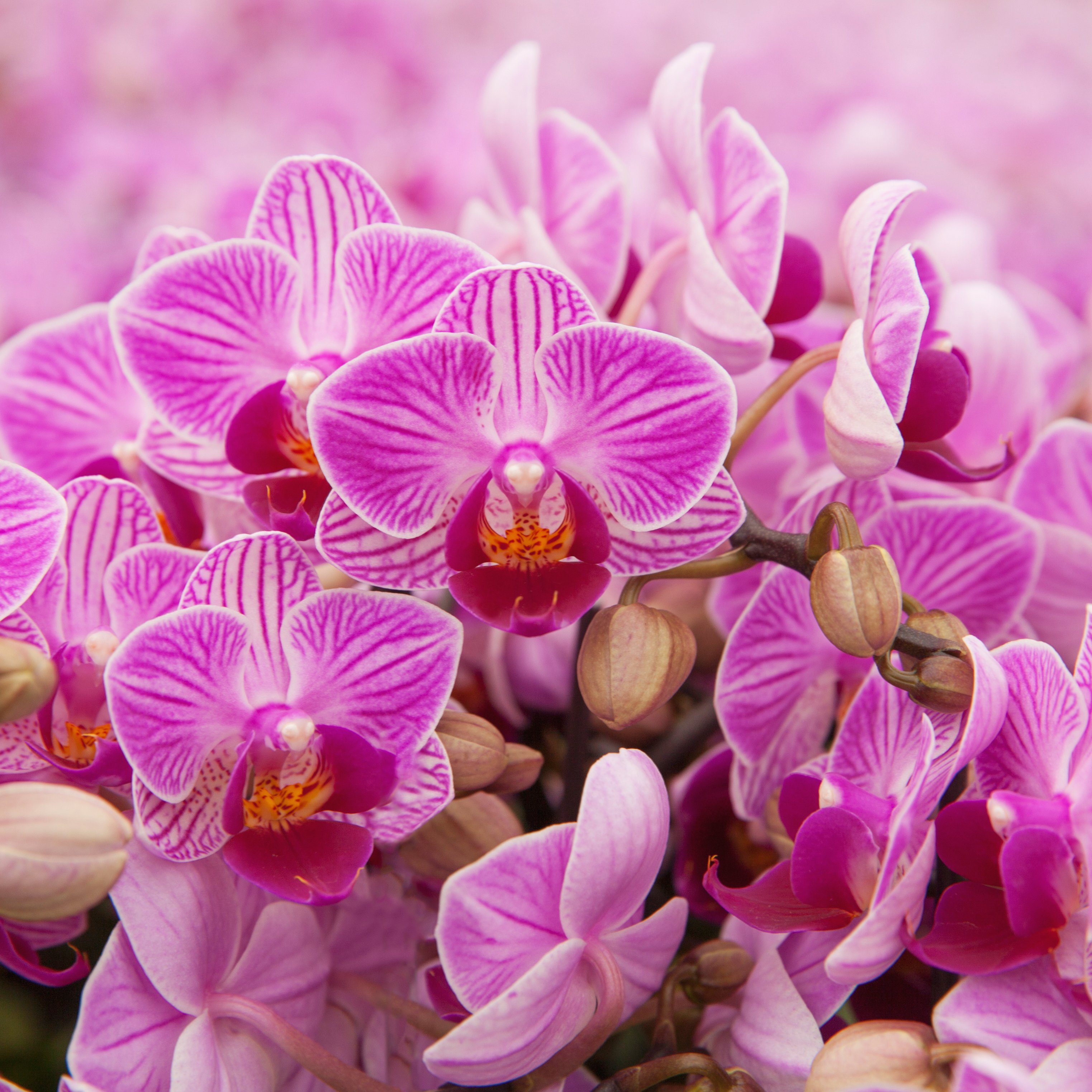
You’ve bought a stunning orchid in the perfect shade to complement your home decor, or a family member or friend gave you one as a gift. But now you find yourself wondering how long before you’ll lose those gorgeous, bright blooms.
This leaves you asking, how long do orchids last?
It’s a question many new orchid owners ask, and one that we’re happy to answer.
The lifespan of orchids depends on the variety of orchid and the type of care the plant receives. All our orchids are phalaenopsis orchids, which means most blooms typically last from two to three months, depending on how open the blooms are when you receive the plant.
This blog post shares more details on how to choose the perfect orchid at the store to help you get the most longevity.
This, however, is only one of many flowering periods in an orchid’s life cycle. After the initial bloom, the plant goes into a resting period. The orchid flowers fall, and some new orchid owners throw away the plant thinking it has died. It hasn’t! The plant is just resting and storing energy while it prepares to rebloom in the future.
However, going back to our original question, a phalaenopsis orchid has the potential to live for several years, potentially even decades. Part of what helps to extend the plant’s lifespan is providing the proper care both during blooming periods and resting periods.
Orchid blooms can last anywhere from one to three months on average. When you first bring your orchid home, be sure to create an environment in which it can thrive. Place the plant in an area where it will get plenty of bright, indirect sunlight like a north- or east-facing window. Be mindful of temperature as well and avoid placing the orchid near any drafts, doors, or open windows.
Water once weekly, careful not to overwater, which can lead to root rot and premature bloom loss. We always recommend that you remove any excess water that could be sitting at the bottom of the pot.
As your orchid enters its resting phase, continue to water the plant every week. The only exception is the weeks where you fertilize your orchid — something that you should do once or twice a month and only while the plant is resting. During this dormant period, you’ll also want to move your plant to an environment that has a slightly cooler temperature, but still away from doors, drafts and open windows.
During the orchid's resting period, you may notice your plant producing new buds at the end of the flower spike. You can cut this spike back to a “node,” or a triangular-shaped area on the stem, to encourage the orchid to generate new side flower spikes.
You can also remove the entire spike, allowing the orchid to put more energy into its leaves and roots. Finally, you can promote orchid reblooming by moving it to an area where the nighttime temperatures are slightly lower than its current environment, or around 55-65 degrees. Just make sure it’s receiving enough sunlight.
Ultimately, you want to make sure you don’t stop caring for your plant just because it isn’t as ‘pretty’ without its blooms. Your plant still needs as much care during its resting period to ensure that it is able to rebloom and look bright and gorgeous year after year.

Copyright Just Add Ice® Orchids 2023